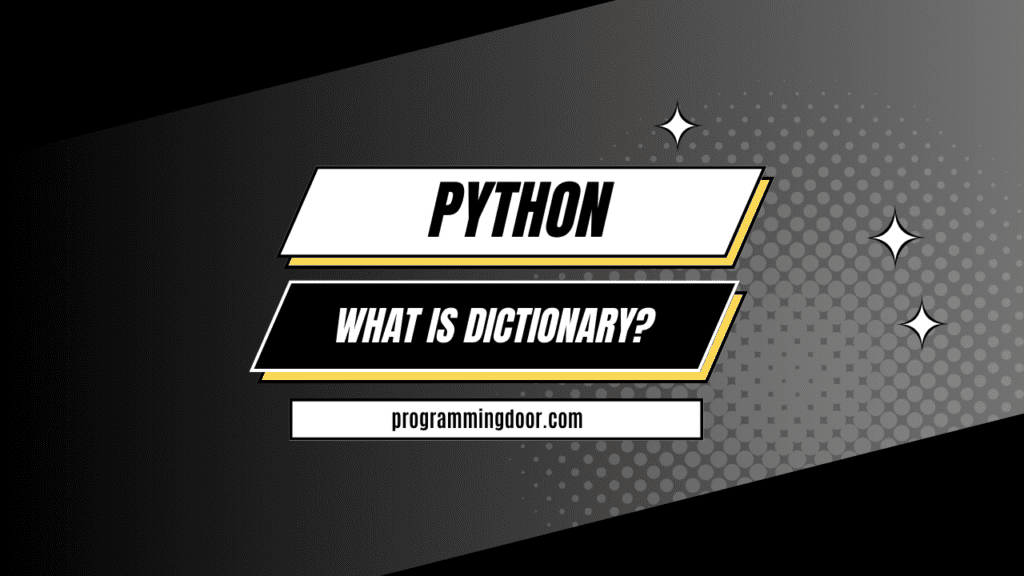

In Python, a dictionary is a built-in data structure that allows you to store a collection of key-value pairs. It is sometimes referred to as a “hash map” or “associative array” in other programming languages. Dictionaries are highly versatile and are used to store and retrieve data in an efficient manner.
Here are the key characteristics of dictionaries in Python:
- Key-Value Pairs: Each item in a dictionary is a key-value pair, where the key is a unique identifier, and the value is associated data. Keys must be immutable (e.g., strings, numbers, or tuples), while values can be of any data type.
- Unordered: Dictionaries are unordered, which means that the order of elements is not guaranteed. This is different from lists and tuples, which are ordered collections.
- Mutable: Dictionaries are mutable, meaning you can modify, add, or remove key-value pairs after the dictionary is created.
- No Duplicate Keys: Keys in a dictionary must be unique. If you try to add a duplicate key, it will overwrite the existing value associated with that key.
Creating a Dictionary:
You can create a dictionary using curly braces {} and specifying key-value pairs as follows:
my_dict = {"name": "John", "age": 30, "city": "New York"}You can also create an empty dictionary and add items to it incrementally:
my_dict = {}
my_dict["name"] = "John"
my_dict["age"] = 30
my_dict["city"] = "New York"Accessing Values:
You can access values in a dictionary by specifying the key in square brackets or by using the get() method:
name = my_dict["name"] # Access by key
age = my_dict.get("age") # Access using get()Modifying Values:
You can modify the values associated with keys in a dictionary:
my_dict["age"] = 31 # Update the ageAdding and Removing Items:
You can add new key-value pairs or remove existing ones:
my_dict["job"] = "Engineer" # Add a new key-value pair
del my_dict["city"] # Remove a key-value pair by keyIterating Through a Dictionary:
You can loop through the keys, values, or key-value pairs in a dictionary:
for key in my_dict:
print(key, my_dict[key])
for value in my_dict.values():
print(value)
for key, value in my_dict.items():
print(key, value)Dictionaries are commonly used for tasks such as storing configuration settings, representing data records, or efficiently looking up values based on unique keys. They are a fundamental data structure in Python, offering great flexibility and versatility.





